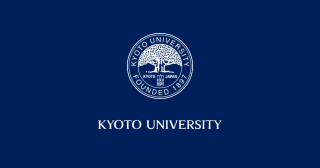On 12 February, Kyoto University hosted a symposium entitled "Living with Earthquakes: Causes, Early Warning, and Damage Mitigation" at the 2016 meeting of the American Association for the Advancement of Science (AAAS), the world's largest general scientific society and publisher of the prestigious academic journal, Science . This event, held in Washington DC, marked the first occasion on which a Japanese university was selected to host such a scientific session.
Organized by Mr David Kornhauser, Kyoto University's Director of Global Communications, and moderated by Dr John Taber, Director of Education and Public Outreach at the Incorporated Research Institutions for Seismology (IRIS), the session featured presentations by three experts -- Associate Professor Yoshihiro Ito and Assistant Professor Masumi Yamada of Kyoto University's Disaster Prevention Research Institute (DPRI) and Professor Richard Allen of the Seismological Laboratory, University of California, Berkeley.
Drs Ito and Yamada discussed, respectively, the possibility of forecasting earthquakes by measuring "slow slip" as a precursor to mega-quakes, and Japan's earthquake early-warning (EEW) system and the efforts being made to enhance its reliability, while Professor Allen introduced MyShake, an Android-based citizen science app that could improve EEW on the West Coast and worldwide. These were followed by a general discussion and Q&A.
Despite being held on the East Coast, which is not generally prone to earthquakes, the symposium drew a near-capacity crowd with a strong interest in the topics discussed.
At the same time, the session served to reveal regional differences in earthquake awareness; responding to the presentation about the Japanese EEW system, a Western audience member asked the speaker whether an alert being sent to a large number of mobile phones at once might not trigger a panic, a situation that most residents of Japan would not at all find surprising.
The AAAS Annual Meetings are different from a typical academic conference in that they attract scientists from a broad range of disciplines as well as journalists and policymakers. The "Living with Earthquakes" symposium provided the DPRI researchers with an invaluable opportunity to introduce a large and diverse audience of over 10,000 people to cutting-edge disaster-prevention and -mitigation research in Japan.

Dr Yamada introducing Japan's EEW system

Dr Ito (left) responding to an audience question

Mr Kornhauser (left) acting as master of ceremonies

Dr Ito (left) interacting with a symposium participant

Symposium participants
Related links
- AAAS 2016 Symposium
Living with Earthquakes: Causes, Early Warning, and Damage Mitigation
https://aaas.confex.com/aaas/2016/webprogram/Session12075.html -
MyShake
http://myshake.berkeley.edu/




